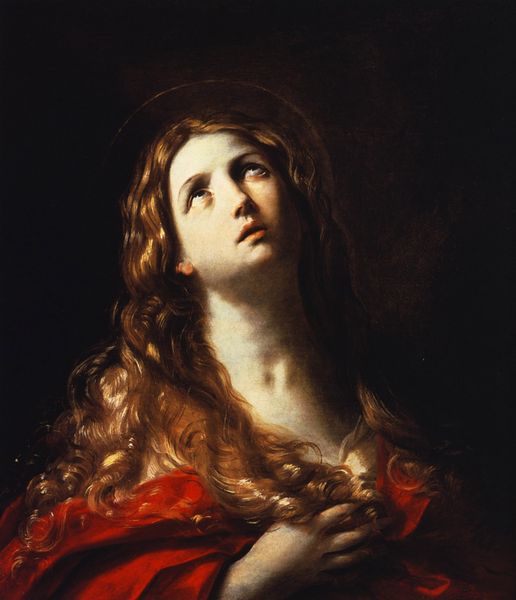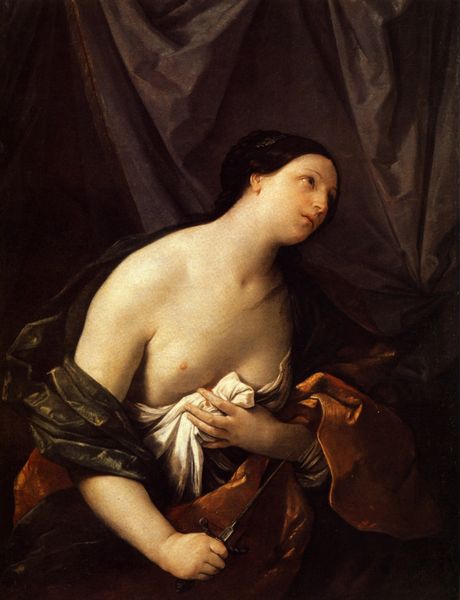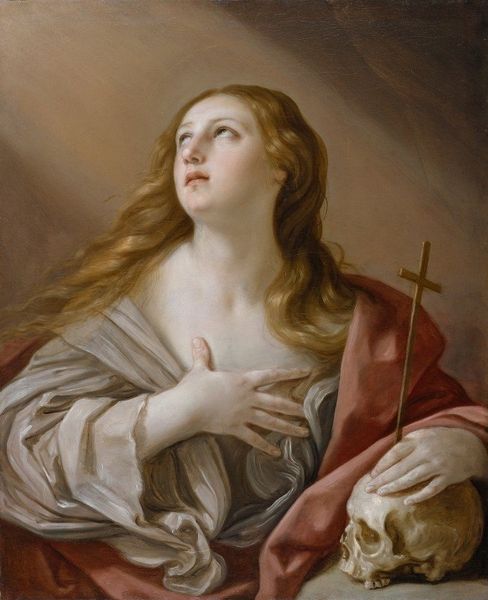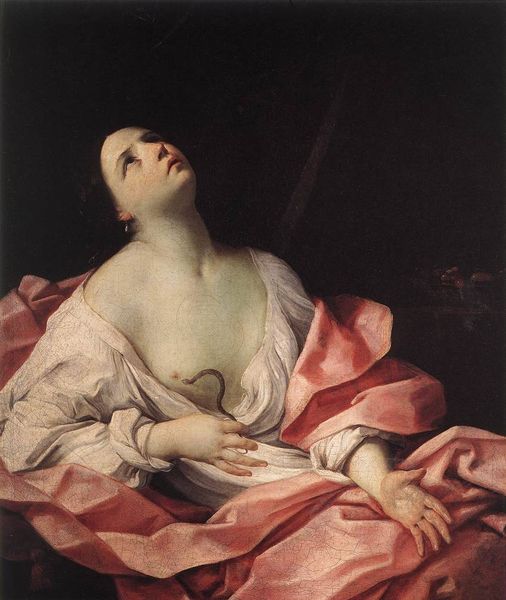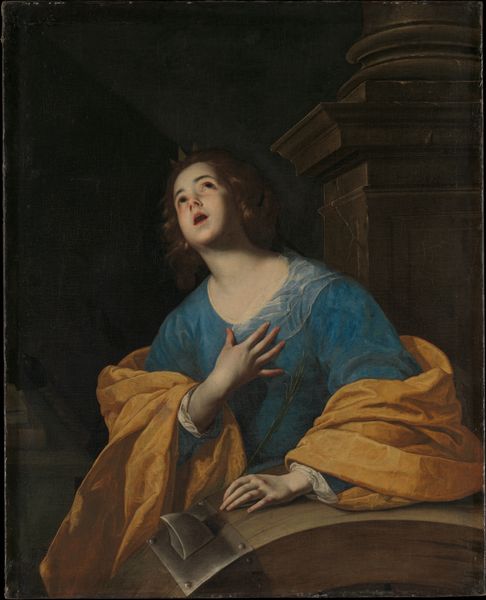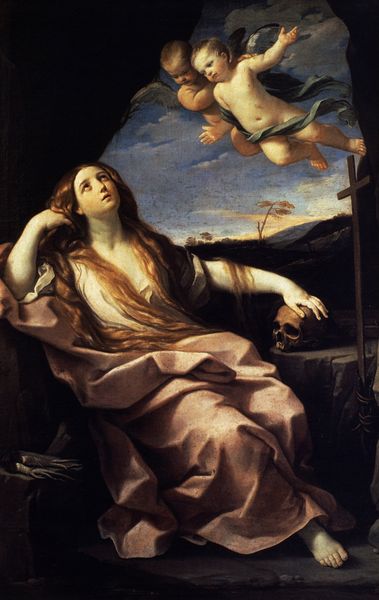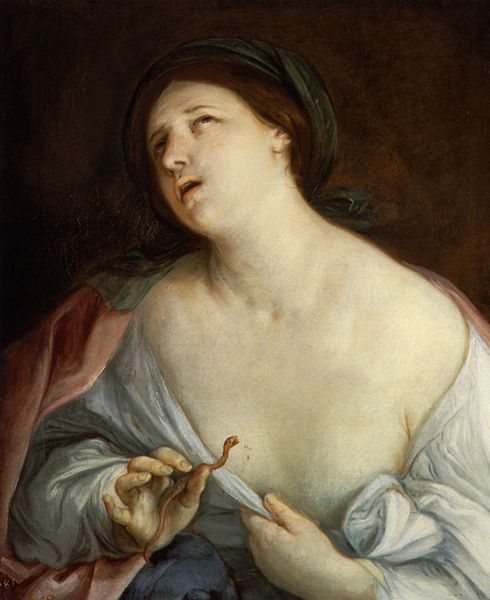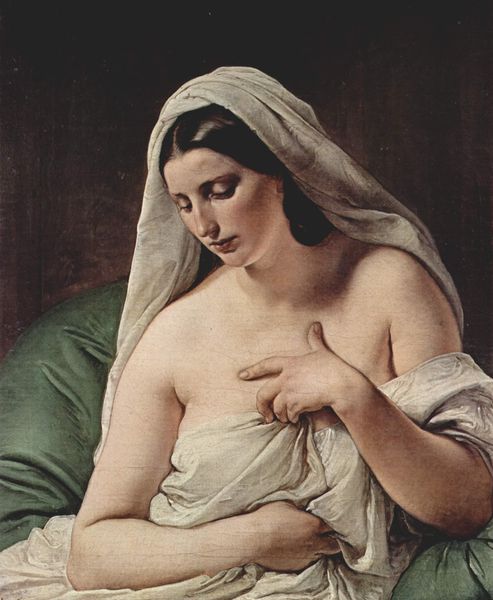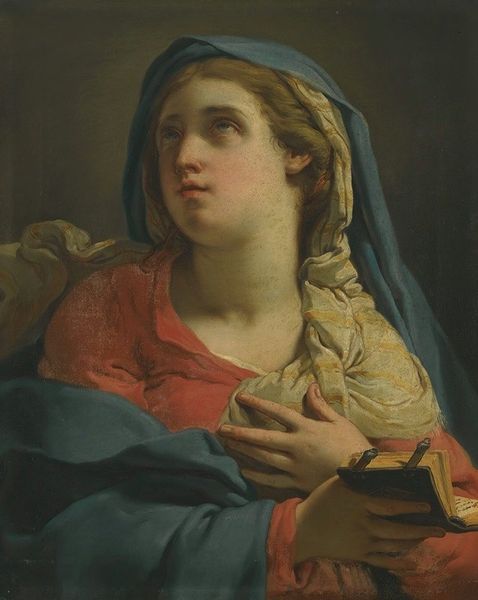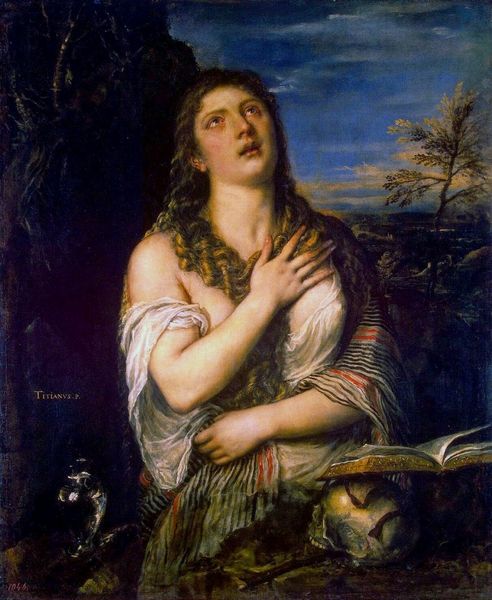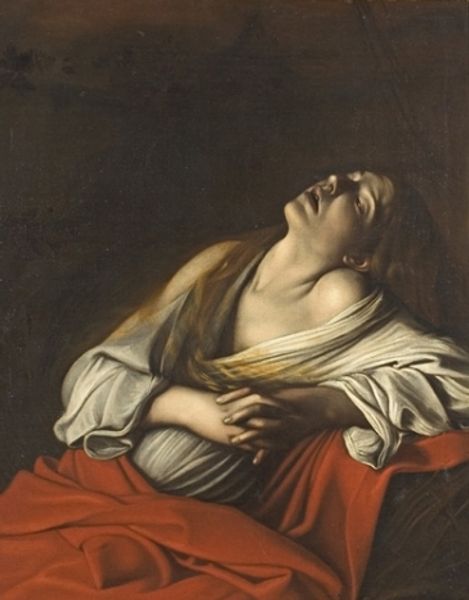
oil-paint
#
portrait
#
allegory
#
baroque
#
oil-paint
#
famous-people
#
history-painting
#
academic-art
#
italian-renaissance
#
nude
#
erotic-art
Dimensions: 124 x 94 cm
Copyright: Public domain
Curator: I’m struck by the paleness, a near translucence. And those eyes gazing upwards, so theatrically resigned! Editor: Precisely! The canvas before us is Guido Reni's “Death of Cleopatra,” dating to 1639, an oil painting presently held here at Sanssouci in Potsdam. Reni captures Cleopatra in her final moments, succumbing to the venom of an asp. Curator: There’s a staged quality that almost detracts, but I admit, Reni's masterful handling of light and shadow compels my attention. It creates an erotic charge but diffuses the painting's capacity to emotionally implicate the viewer. Editor: It's a curious dance, isn’t it? The composition certainly lends itself to formal analysis, the way the diagonals intersect. Her upturned gaze is classical, perhaps to transcend into a pure art object, almost celestial even. I am drawn to the sensuality present as the snake bites at her pale chest. The piece plays with a Baroque notion of flesh becoming one with immortality. Curator: A common subject, but with its Baroque artifice! The positioning of the asp, the bared breast – each element is painstakingly arranged to maximize erotic tension and elevate the artwork beyond a mere historical depiction, creating both shock and allure. The artist captures her surrender beautifully and uses her as a conduit. Editor: I suspect Reni wanted us to ponder not only death but also the spectacle of power meeting its end, even through feminine vulnerability and surrender to fate. What a clever manipulation of subject and signifier. The colors as well contribute, dark draping and bright white skin all combine into the piece. It's both history and commentary simultaneously. Curator: Indeed. Reni offers us not raw emotion but an exquisitely crafted tableau—a moment frozen in theatrical agony, ripe for decoding. This makes it beautiful and difficult all at once. Editor: Right! It asks, “Can death become art?”, a fascinating riddle whispered across the centuries by brushstrokes and pigments. It also tells me about beauty itself and all of the aspects surrounding beauty! I think I could linger here.
Comments
No comments
Be the first to comment and join the conversation on the ultimate creative platform.
